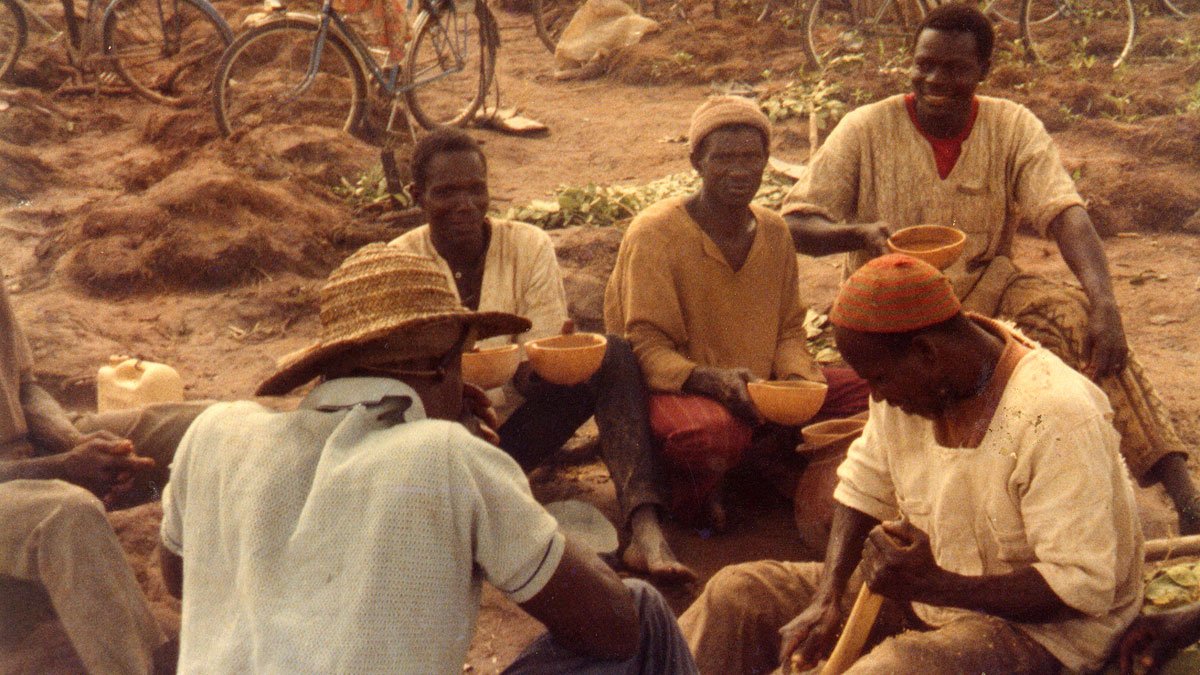
Food
The best compliment you can give a Senufo woman is to say, "This woman cooks." Daughters learn to cook by observing and helping their mothers from an early age. If a daughter cannot cook, it brings great shame upon her mother.
Mortars and Pestles
Many of the foods eaten by the Senufo must be pounded and ground as part of food preparation. Pounding is done in a large wooden container called a mortar with a stick called a pestle. There are three different kinds of mortars. The flat-bottomed mortar is used to grind many cereal crops, like corn or millet. A small mortar is used for condiments or seasonings. Fonio, an important cereal crop, is ground in a special mortar with a depression in the bottom.
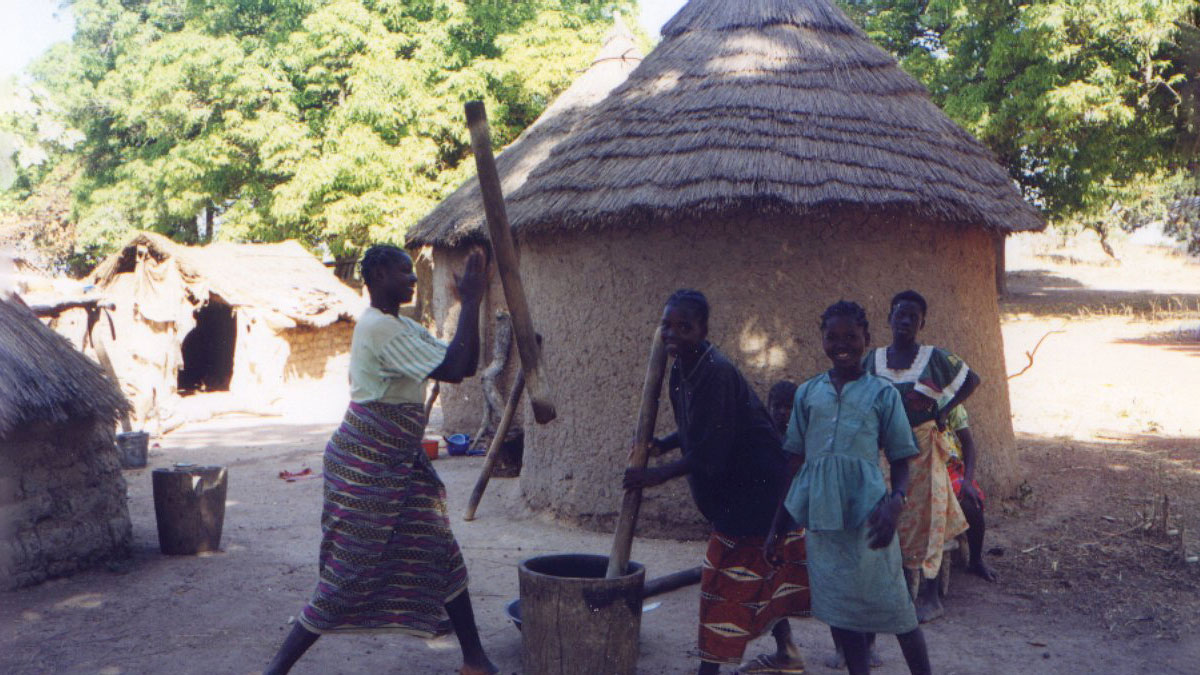
Tô: A Staple Food
Ground cereal flours serve as the main ingredient in tô (pronounced toe), the staple food of the Senufo. To make tô, the flour (besides ground fonio, wheat flour, corn flour, or yam flour can be used) is first mixed with hot water to make a porridge. As the porridge boils on the fire, more flour is added and mixed in with a spatula. This results in a thick paste that thickens as it cools. Tô is served with sauces. The sauces are usually made from vegetables, though meat may be added when available. The food will be served in two dishes, the tô in one and the sauce in another.
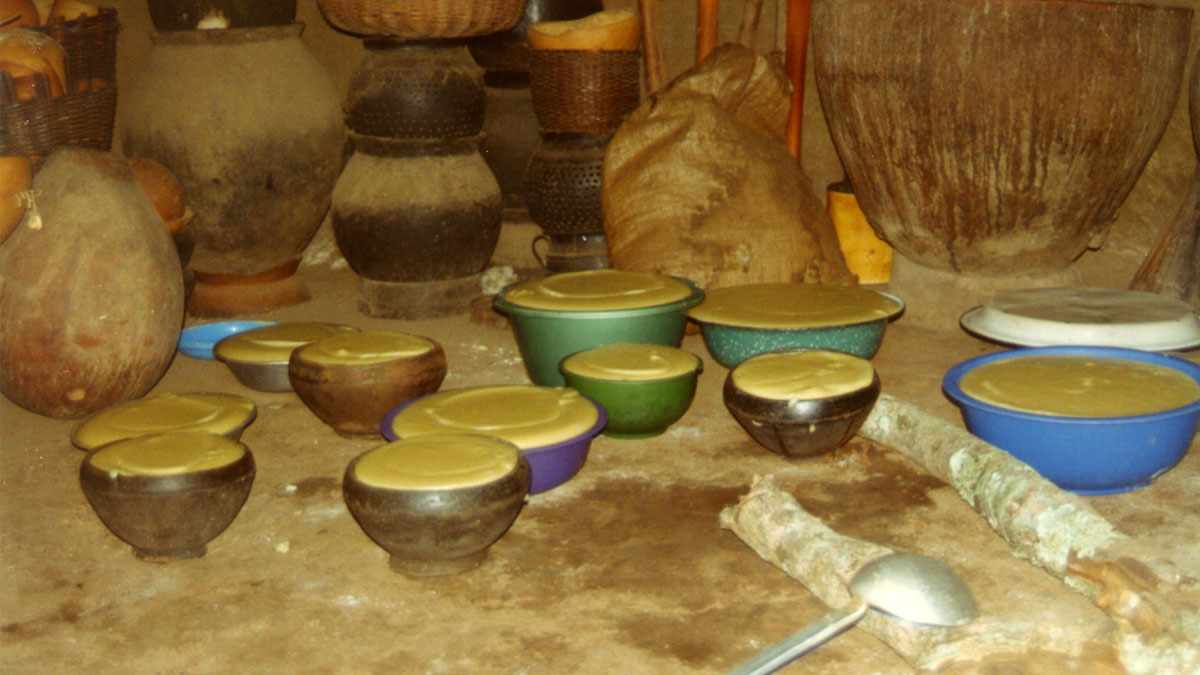
Other Foods
Cereal products are also important in making other Senufo foods, such as pancakes and fermented grain wine. Tubers, like potatoes and yams, are also a part of the Senufo diet.
Honey
Honey is the main sweetener of the Senufo. The bees gather to make their honey in man-made beehive shells made of woven straw and placed high in trees. The man who made the hive gathers the honey then sells or processes it. Honey makes a very strong beer.
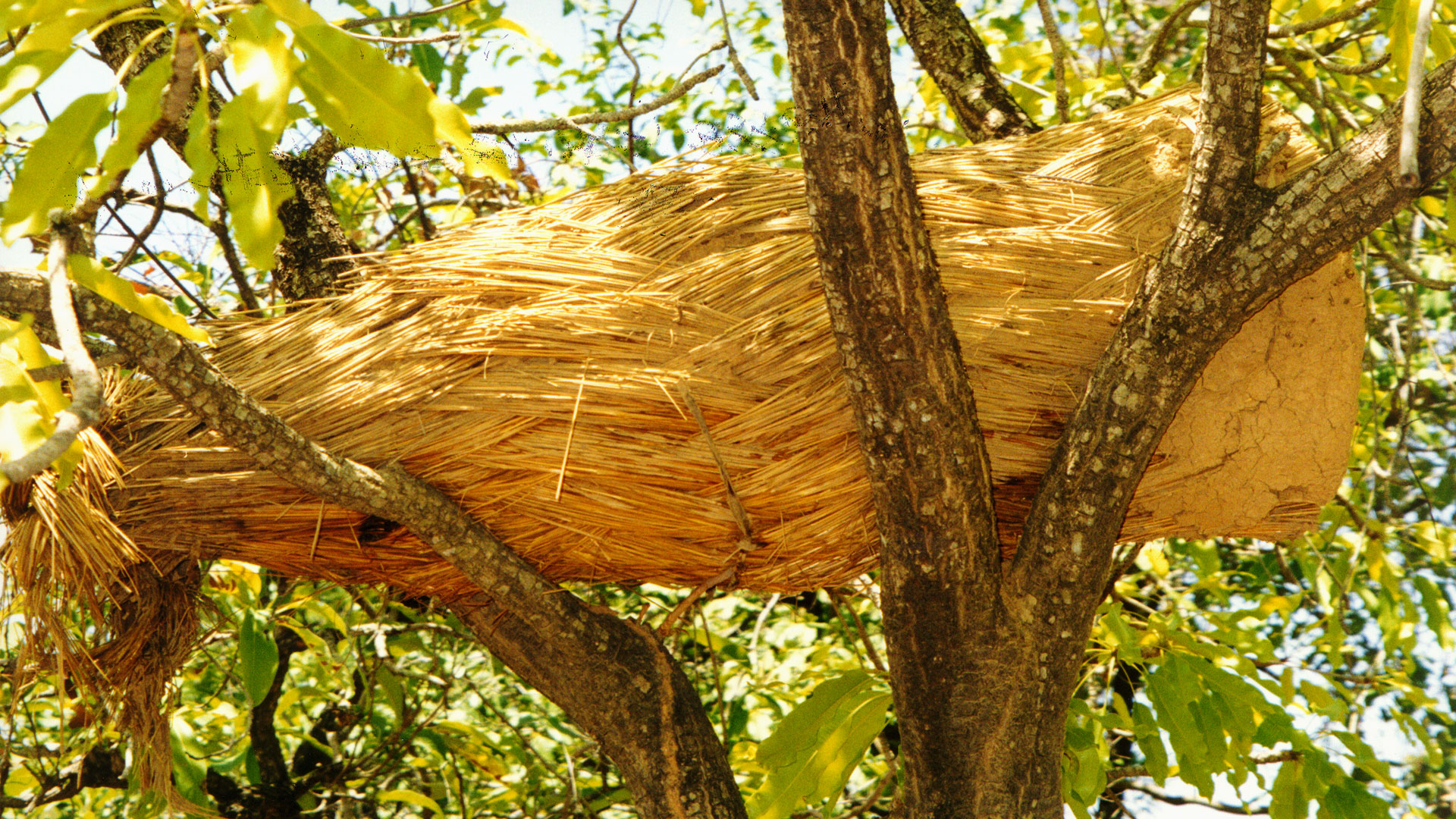
Butter
Butter is made by processing sheanut (pronounced she-nut) kernels. First the kernels are boiled and dried. They are then pounded by adolescent girls in the village, who have the strength and endurance for this demanding task. To make the time pass more easily and quickly, the girls often work in twos or threes and sing to the beat of their pounding. Once this step is finished, the sheanut powder is roasted and ground. The resulting paste is diluted with cold water, which separates out the butter to be purified. The purifying is done by boiling the butter and removing the purified oil that floats to the top. Once the oil cools and solidifies, it can be used for cooking as well as for body cream to soften, sooth, and protect the skin.
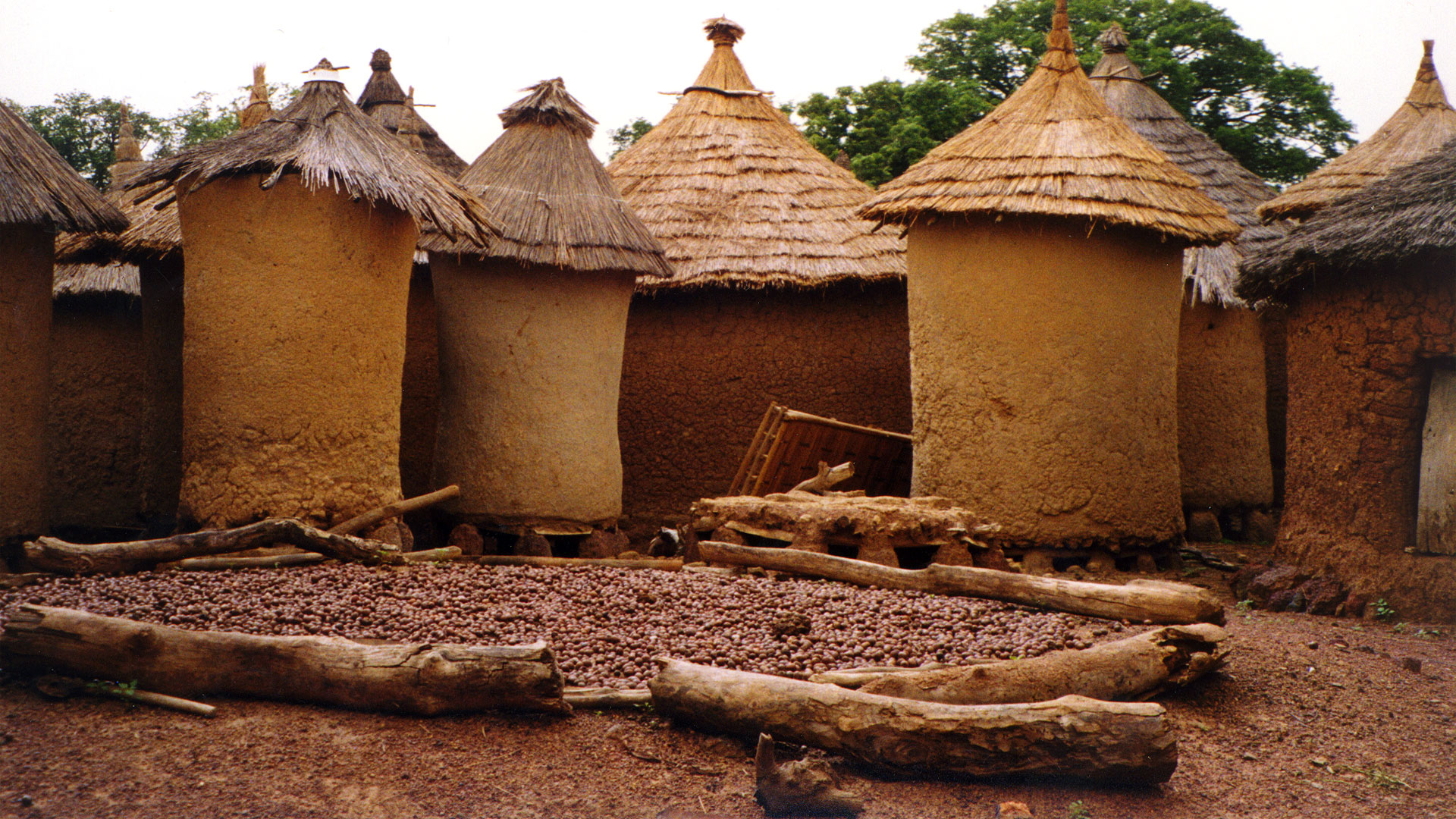
Condiments
The three main condiments used in Senufo cooking are salt, chili peppers, and sumbala. Sumbalais the processed seed of the nere (pronounced nare-ay) tree. It has a strong smell.
Fish
Fish are important to the Senufo. When fishing, the Senufo are respectful and make sure not to deplete the supply of certain species. Fish are often associated with fertility. The catfish is of great importance in West Africa in general. It is often represented on coins and paper money.
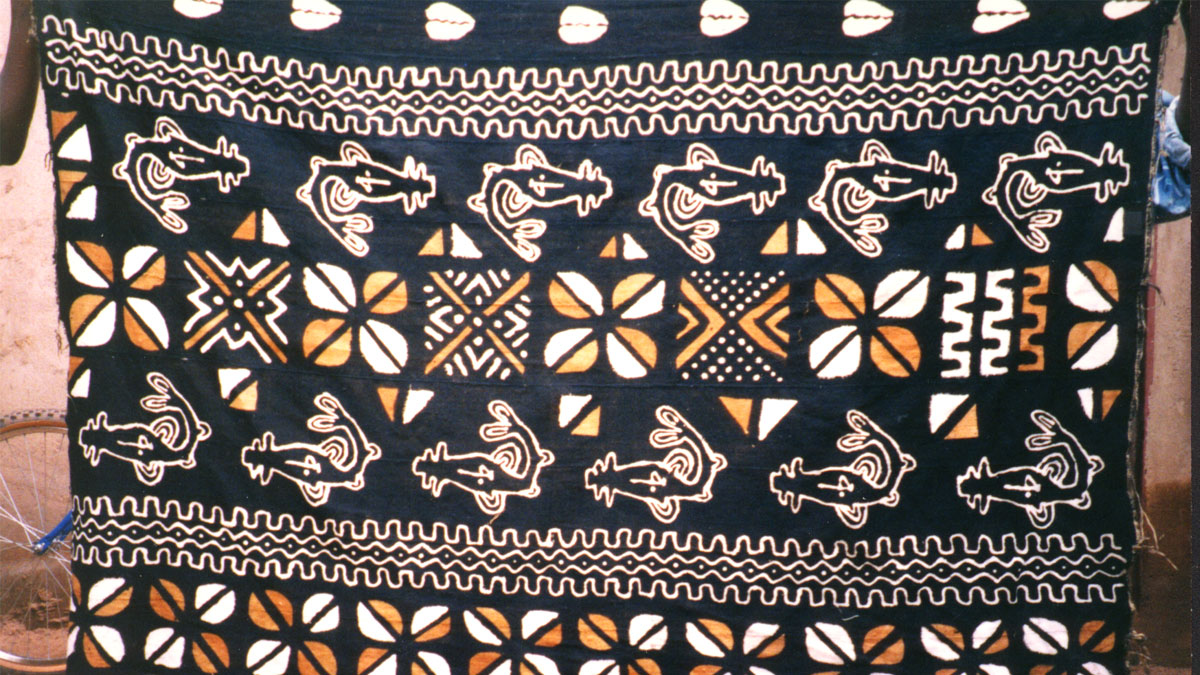
Hunting
Besides fish, the Senufo eat meat that has been killed by their hunters. Big game is scarce in this area. The most commonly killed game consists of birds and rabbits.
Eating
Clay pots and metal pots are used in cooking. Food is served in clay or carved wooden bowls. Manufactured utensils are also available. Eating is done with the fingers, from bowls set on the floor. Men and women eat separately, though boys will eat with their mothers until around the age of three. Elders start the meal. It is insulting to the cook to not eat as much as possible and finish the sauce.
